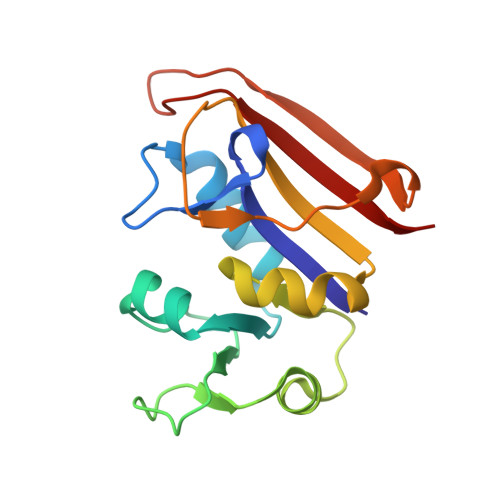Free energy simulations of active-site mutants of dihydrofolate reductase.
Doron, D., Stojkovic, V., Gakhar, L., Vardi-Kilshtain, A., Kohen, A., Major, D.T.(2015) J Phys Chem B 119: 906-916
- PubMed: 25382260
- DOI: https://doi.org/10.1021/jp5059963
- Primary Citation of Related Structures:
4QLE, 4QLF, 4QLG - PubMed Abstract:
This study employs hybrid quantum mechanics-molecular mechanics (QM/MM) simulations to investigate the effect of mutations of the active-site residue I14 of E. coli dihydrofolate reductase (DHFR) on the hydride transfer. Recent kinetic measurements of the I14X mutants (X = V, A, and G) indicated slower hydride transfer rates and increasingly temperature-dependent kinetic isotope effects (KIEs) with systematic reduction of the I14 side chain. The QM/MM simulations show that when the original isoleucine residue is substituted in silico by valine, alanine, or glycine (I14V, I14A, and I14G DHFR, respectively), the free energy barrier height of the hydride transfer reaction increases relative to the wild-type enzyme. These trends are in line with the single-turnover rate measurements reported for these systems. In addition, extended dynamics simulations of the reactive Michaelis complex reveal enhanced flexibility in the mutants, and in particular for the I14G mutant, including considerable fluctuations of the donor-acceptor distance (DAD) and the active-site hydrogen bonding network compared with those detected in the native enzyme. These observations suggest that the perturbations induced by the mutations partly impair the active-site environment in the reactant state. On the other hand, the average DADs at the transition state of all DHFR variants are similar. Crystal structures of I14 mutants (V, A, and G) confirmed the trend of increased flexibility of the M20 and other loops.
- Department of Chemistry and the Lise Meitner-Minerva Center of Computational Quantum Chemistry, Bar-Ilan University , Ramat-Gan 5290002, Israel.
Organizational Affiliation:


















